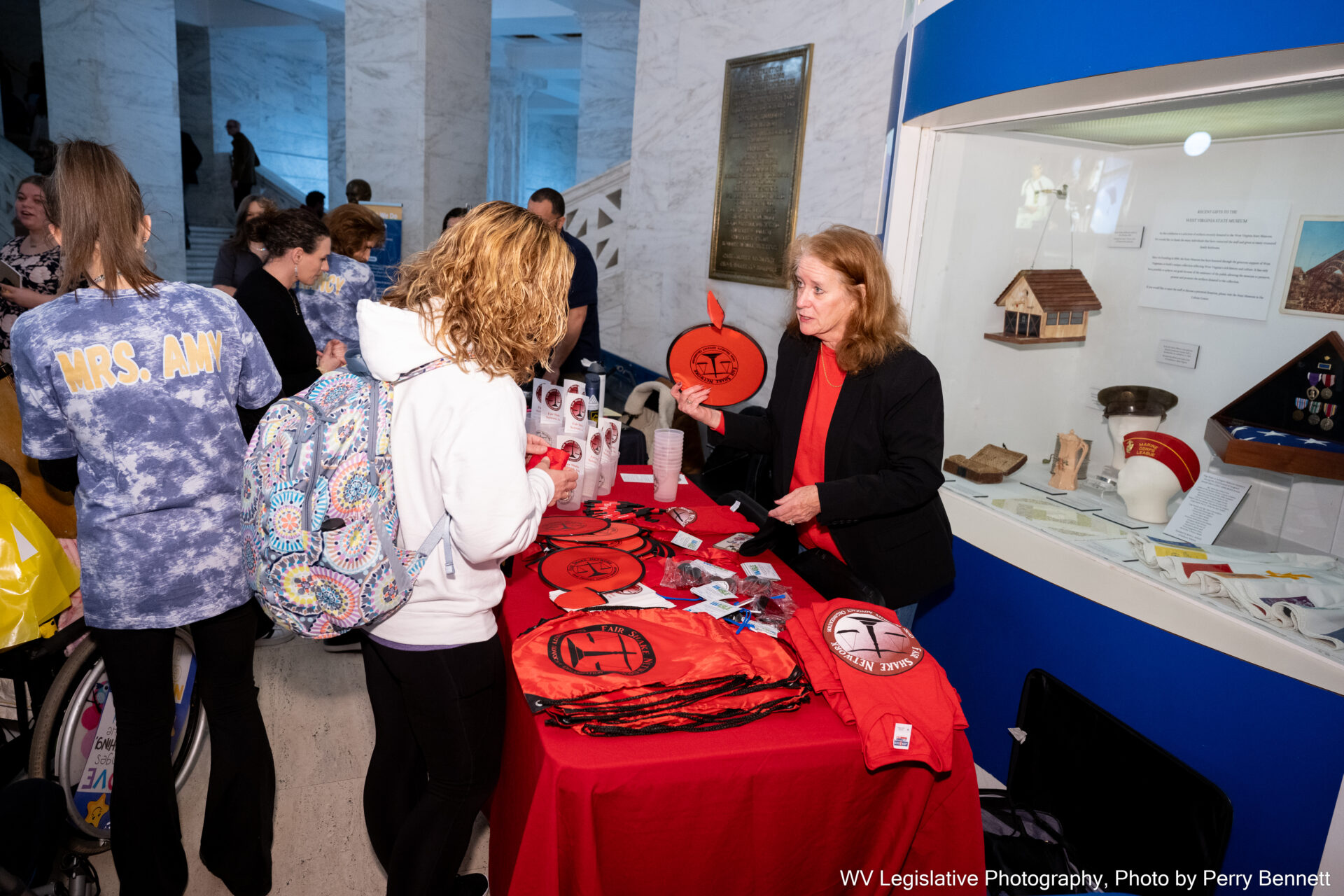Special education instructors, students and their families gathered at the Capitol Wednesday to advocate for more support in their classrooms during the first ever Special Education Day. Organizers filled the lower rotunda with students from Kanawha County’s self-contained classrooms.
Blaire Malkin, a staff attorney at Mountain State Justice, said these are students with the most complex needs who need the most support day in and day out. Malkin is also president of the board of Exceptional Possibilities of West Virginia, a nonprofit that creates and advocates for events and resources for individuals with disabilities and their families. She said the day is meant to raise awareness of special education needs.
“It’s a chance for special education teachers, aides and students to come to the legislature and promote the need for more special education teachers and aides in the state and also get the students a chance to see how our state government works,” Malkin said
She further highlighted the shortages in special education classrooms, noting some unintended consequences of education legislation passed last year.
“When the legislature passed the Third Grade Success Act last year, it required aides in all first-grade classrooms,” Malkin said. “So nearly half of special education aides left special education for those jobs, because those jobs are frankly easier and pay slightly more.”
Rachel Brown is a special education curriculum specialist for Kanawha County Schools. Kanawha County Schools is the state’s largest school district with more than 23,000 students enrolled, accounting for close to 10 percent of the state’s public school enrollment. Brown works closely with the county’s self-contained classrooms.
“Out of my 66 classrooms, half of my classrooms are staffed with long term substitute teachers, or alternative certification candidates,” she said. “We have untrained teachers, and we do have a strong alternative certification system in Kanawha County schools, but you’re getting your training on the job.”
Brown is also one of the lead organizers for Special Education Day at the Capitol. She says the unintended impact of the Third Grade Success Act on special education classrooms is set to worsen in the coming years.
“A lot of my aides in Kanawha County Schools have moved to first grade,” Brown said. “Next year, all of our second-grade classrooms are going to have aides as well. In the following year, third grade is going to be staffed with aides. It’s decimated my population of aides in my classrooms, and they are essential for my classroom success. Our students need a lot of care.”
Brown hopes a proposed pay raise of 10 percent for self-contained teachers and 5 percent for self-contained aides in SB 680, introduced by Sen. Amy Grady, R-Mason, can help keep special ed educators in their classrooms.
“I hope this shines a light for legislators,” she said. “A lot of the common public doesn’t know about my type of classrooms, we are the 1 percent. And it’s easy to just shut the door and not even notice they’re in schools. And we want to raise awareness and make sure that the legislature knows about our students and our needs.”
Brown says Special Education Day made history by bringing the most people with disabilities ever to the Capitol at one time.
“I wanted to have a day for the students,” she said. “I also wanted the legislature to be able to see our students. The Capitol is a beautiful place, our state capitol, and they don’t get to get out and do a lot of things. This gives them the opportunity to come here and just be a part of session.”
